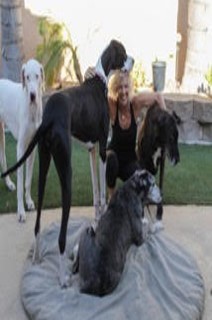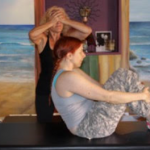For the New Teacher – Thoughts from Auntie Sunni
by Sunni Almond
As I browse the various Pilates forums, I always see questions about how to handle this temperamental client, or what to do about that injury, or the group class pressure to “bring it”, or how to fit in with the other teachers – all because now you’re the FNG (Friggin’ New Guy). Depending on the Pilates experience you had before your teacher training and the school you went to, you may have learned choreography or you may have learned how to teach. These are two COMPLETELY different things.
In my experience with contemporary technique training, there was a lot of “learning exercises” and there was choreography tossed in to make the exercises more ‘fun’. From there, we learned to add flourishes to “make it your own” as a way to give your teaching a certain “curb appeal” — to make your group classes the ones that people flock to and have you become the “Energizer Bunny” that students love to get their Pilates ON with. I learned add-ons, modifications & variations, as well as beginner, intermediate, advanced, and super advanced levels of work. I was given a toolbox of ideas for working with different populations and that’s what I used for my privates and semi-privates.
In my more recent classical trainings, I learned HOW to teach each exercise including the goal for the exercise and how to find the best spot in the studio to make the exercise fit the client (the client never has to fit the exercise). I also discovered that my new objective was to learn Pilates as a system. This required that I learn/relearn many exercises, because what I thought I knew and thought I was stellar at, was exactly alike and yet completely different all at the same time. Frustrating? Oh yeah!!
When I was a newly-hatched instructor, I liked teaching group classes rather than privates – simply because it wasn’t personal. Back then, in my private lessons, aside from moving them through things I thought they would like (and so that they would want to come back), I felt inadequate in finding the way to “work with the body in front of me” — that elusive phrase which is repeated again and again and has no answers.

You will discover, ironically, that the answers lie in the body in front of you.
You will develop your “Teachers Eye”. It will take a long time, and every client will make you more brilliant. I no longer believe in extensive introductory assessments. I let their movement tell me the story.
Here are four things to keep in mind in today’s installment of “Advice from Auntie Sunni”:
- With all new clients (including your audition for your teaching position), my first question is always “Does anything hurt, are you recovering from any issue, injury, surgery or illness?” Then I find out what their Pilates experience is and I start them through a workout at their claimed level of experience. IT IS EYE OPENING, to say the least. Everyone’s idea of their ability can be vastly different from what you’d expect, depending on who their previous teachers were, and the style they are accustomed to. The answer here is to simply watch and cue the movements, all the while thinking, “How can I help them make this better?” You can use this observation in a “Personal Needs” section near the end of the workout.
- For the challenging new student who might have an attitude and not much, if any, experience, I would bring it back to, “What can you do for me now?”. I would show them the gifts of Pilates, perhaps by pointing out a postural issue, and how Pilates can help correct it. I have found that going back to posture while moving clients through the repertoire can relieve their aches and pains and helps them see value in their Pilates exercises. You will find they advance more quickly, because they will have landmarks to gauge themselves. I use visible markers in their posture to show gains (such as less rounded shoulders, and not leading as much with their chin), greater flexibility and balance with strength. If you help them fix something and have a tangible measure for it, they will know you are a genius and bring you their friends. Everyone will want to know your client’s ‘secret sauce’ – that’s YOU!
- For clients with injuries, who are rehabbing, etc., always remember to do no harm, and never ask them to work through pain. We are generally not doctors or physical therapists (unless you also have that background and training) – we teach exercise! While we cannot cure or heal, their new and improved healthy movement patterns may end up doing just that. Teach only what you know, and as a trained teacher, you will probably always know more about Pilates than they do, they will see you as the expert, and trust you with their bodies. If they are rehabbing, make sure that they have a medical clearance for exercise because if they don’t (and worsen their injury), it’s your insurance that will take the hit.
- Feel no pressure to Bring It! Any class that is taught well will leave them wondering what just happened, even if it’s at a very basic level. Use every ounce of the juice that’s available in the move. Doing 40 leg circles with feet in straps on the reformer with a heavy spring load is generally not the answer.
And thus, my lovely FNG’s, while you may feel overwhelmed at the start of your journey in the world of Pilates, I am happy to share these hints that helped me when I was the FNG. Yes, Auntie Sunni has your back…
But unfortunately, our time together has come to an end. But fear not, I have only stepped out to work on my next big project (getting Scott started on building my High Chair … shhh, he doesn’t know yet). As soon as I have done that, and have made sure that my several hundred dogs have been fed, walked and loved, we will continue, hand in hand, with your journey. Our next chapter will give you some suggested homework for your various clients.
 Deja, stop eating the sofa!
Deja, stop eating the sofa!
Reggie, NO, you cannot sit on me!
Okay, off to teach…

